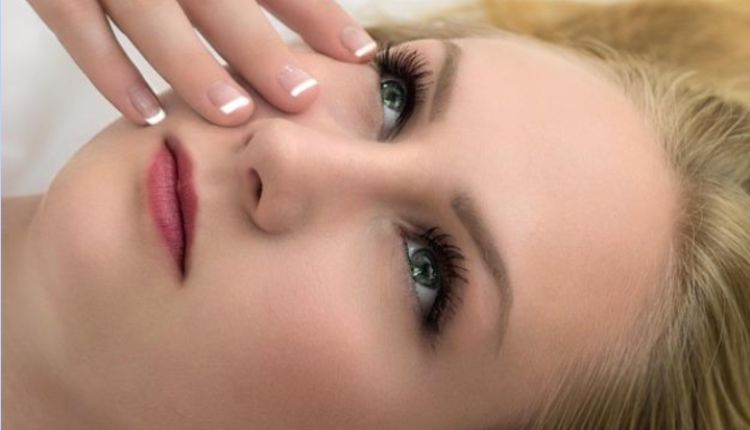Acne breakouts are not only painful. They can also blemish your skin and deflate your self-esteem.
Fortunately, dozens of effective acne treatments exist.
Not only can these interventions smooth out the unsightly acne scars. Some may also address the condition at the source, preventing future recurrence.
However, it’s prudent to understand how acne develops to accurately pick the best treatment. That’s for the simple reason that not every product marketed as an acne remedy actually works.
As a matter of fact, some supposedly acne formulations may exacerbate the condition rather than alleviate it.
In this post, we uncover the science behind acne treatments and how these products really work.
What Is Acne?
Acne is an inflammatory skin disorder that presents as tiny, painful lesions. It typically results from excess sebum production.
Like most skin conditions, acne can cause great discomfort while it lasts. The disorder may also impact the ego and self-esteem.
Acne is fairly common, too. Recent estimates have put the global prevalence at around 9.4%, with up to 20.5% prevalence rates reported in East Asia and Latin America.
But despite its reputation, acne is treatable. A bit of research is all you need to find a formulation that works for you.
For instance, scheduling an appointment with top dermatologists like the ones available at Park Plaza Dermatology is a significant step towards acne management. The clinic employs qualified dermatologists, who’ll quickly diagnose your condition and tailor a treatment plan that aligns with your skin type.
How Does Acne Occur?
Four conditions are necessary for acne to occur – excess sebum production, clogged skin pores, increased bacterial activity, and inflammation.
First, sebaceous glands become overactive. Sebaceous glands are responsible for secreting sebum – the natural waxy compound that coats the skin’s surface.
Sebum plays a critical role in balancing the skin’s moisture and pH. It also prevents skin pathogenesis and may decrease the impact of sunburns. However, excess sebum production can be problematic.
When sebaceous glands go into overdrive, the excess oil ends up clogging the skin pores. This becomes the second phenomenon in the acne formation process.
Blocked skin pores impede the absorption of essential nutrients, such as vitamin D. They also inhibit the bioavailability of therapeutic compounds in skincare products.
The continued blockage of skin pores weakens the skin’s immunity. It notably makes you vulnerable to the acne-causing bacteria – Cutibacterium acnes.
As Cutibacterium acnes attacks your skin, your body puts up some resistance using what’s left of its immune defenses. Those efforts eventually culminate in inflammation.
Acne inflammation can present in various lesions. Common ones include pimples, blackheads, or whiteheads.
Some people may also experience deeper cysts, especially in severe conditions.
Major Risk Factors for Acne
Endocrine disruptions are a major risk factor for acne breakouts. That explains why the condition is most prevalent around puberty and menstruation.
High stress levels may also trigger acne breakouts. Again, the disorder links back to hormonal imbalance, particularly increased signaling of the primary stress hormone cortisol.
Other risk factors include genetic predisposition, poor hygiene, and certain dietary preferences.
Unlocking the Science Behind Acne Treatments
Acne treatments primarily target the condition’s underlying cause. The remedies work by;
- Decreasing Sebum Production
Many acne formulations deactivate the sebaceous glands, decreasing excess sebum production.
Compounds like salicylic acid and azelaic acid are especially noted for their role in reducing the skin’s sebum levels. Others include hyaluronic acid and L-carnitine.
If you prefer dietary interventions, consider foods rich in vitamin A and omega-3 fatty acids.
- Unclogging Skin Pores
Chemical peels are an effective remedy against clogged skin pores.
The active ingredients in these formulas penetrate deeper into the skin surface and dissolve excess sebum, preventing pore congestion. They also promote cell turnover, expelling clusters of dead skin cells and replacing them with new ones.
For maximum benefits, insist on chemical peels that are loaded with retinoids and glycolic acids. Formulations that contain gentler exfoliants like clay masks would suit you better if you have sensitive skin.
- Fighting Acne-Causing Bacteria
Some acne treatments contain antibacterial properties, enabling them to combat Cutibacterium acnes. You can choose from plenty of oral antibiotics or topical creams.
Home remedies, such as benzoyl peroxide and apple cider vinegar, have also demonstrated promise for killing Cutibacterium acnes.
Other antibiotic natural remedies include garlic, ginger, cinnamon, turmeric, honey, and cloves.
- Soothing Inflammation
While inflammation is an immune response to acne, the pimpled spots can blemish your skin while they last.
Many acne treatments contain anti-inflammatory properties. When applied topically, the formulas can soothe inflamed lesions and remove scars.
As a long-term prevention against acne inflammation, consider supplementing with anti-inflammatory foods like seafood and nuts.
Exploring Different Acne Treatments
Acne treatments come in many formulations, including;
- Oral medications, including antibiotics and anti-inflammatories
- Topical creams
- Chemical peels
- Hormonal therapy
- Microneedling, including radiofrequency (RF) microneedling
Remember to consult a licensed dermatologist before picking the right treatment option for you.
Bursting Acne Treatment Myths With Scientific Evidence
Searching for a proper acne treatment calls for extensive research. While options abound, not every formulation works.
Shun products that promise quick fixes without solid scientific evidence to back their claims. Besides, don’t be lured by marketing clichés like “all-natural” or “purely organic.”
The secret to choosing proper acne treatments lies in reading the ingredients list. Look out for formulations that address acne at the source by deactivating sebum production, fighting acne-causing bacteria, unclogging skin pores, and treating inflammation.
Using a customized approach can also help to accelerate recovery from acne and prevent future breakouts.






